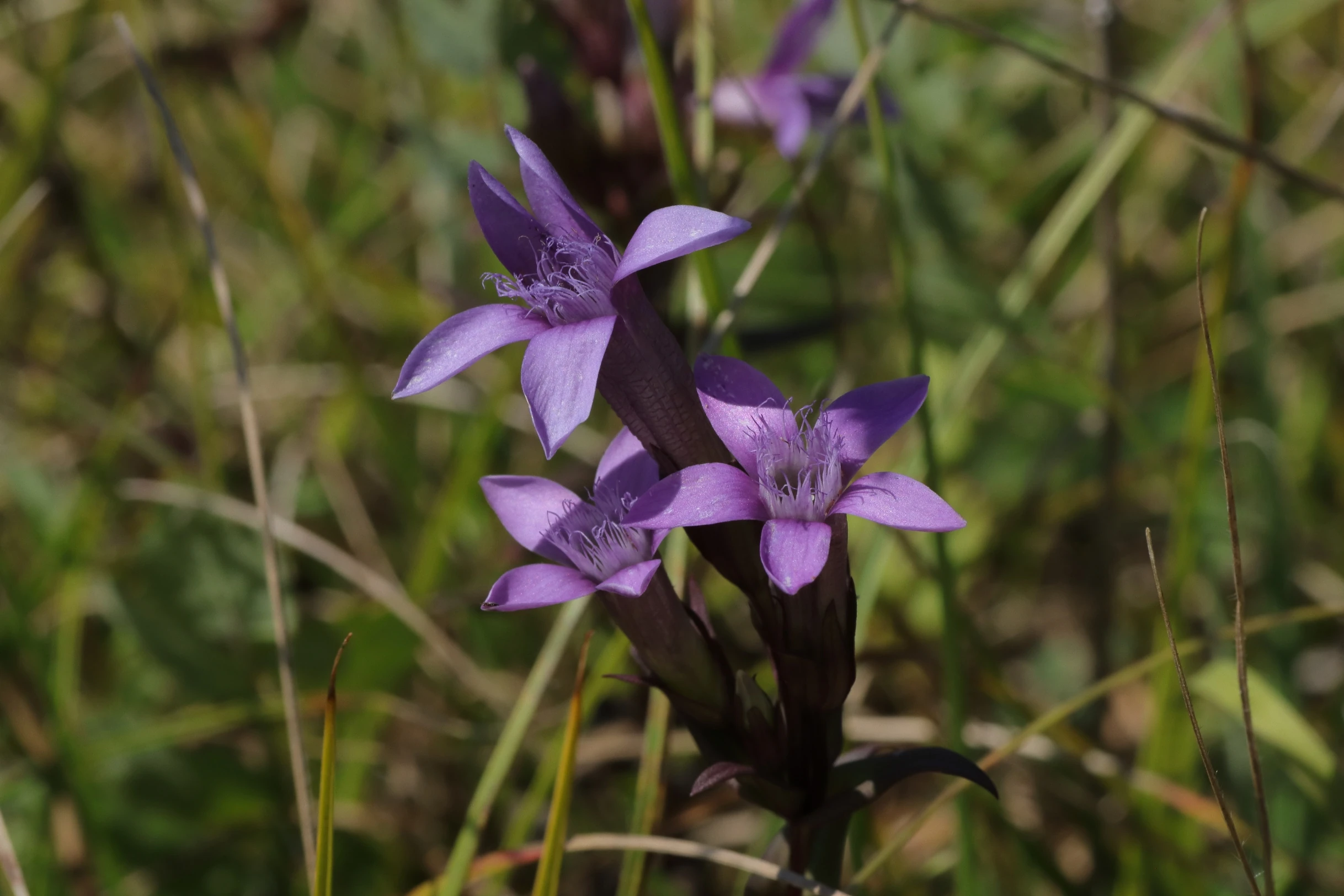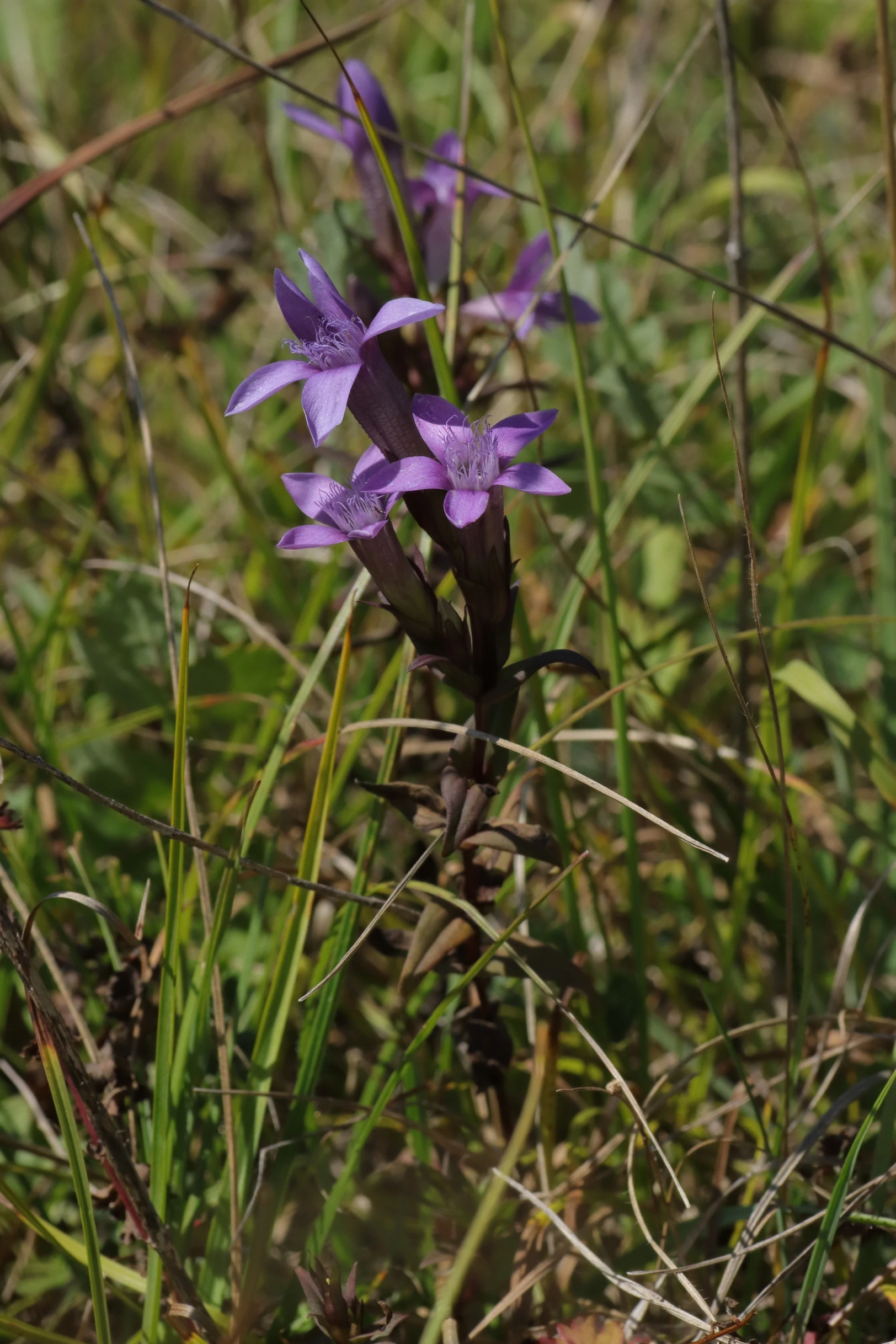4 Minuten Lesezeit
One of the most striking native gentians. The German fringed gentian is a specially protected species.


~ Specially protected species according to the german BArtSchV and BNatSchG ~
Occurrence and distribution: The German fringed gentian grows on rough grasslands, meadows, dry prairies and in marshes. The plant prefers a lime-rich clay soil. These conditions are only found in a few lower mountains and alpine regions of Germany and the neighbouring countries. For this reason, the fringed gentian is already considered endangered and is specially protected. In the Alps, it can be found at altitudes of up to 1,500 metres.
Description of the plant
Growth form: The German fringed gentian is a herbaceous plant that can reach a height of between 5 and 40 cm (2 in to 1 ft 3 in). It is an annual to biennial plant. The upper part of the stem is often branched multiple times. The flowers are at the ends of these. Only one flower forms per “flower stalk”. The inflorescences usually consist of several flowers.
Leaves: The leaves are arranged opposite of each other on the stems. The lower, individual leaves have an inverted ovoid structure. The upper leaves taper to a point at the end and have a lanceolate shape. The leaves have an overall dark brown to dark purple colour. The central mark is clearly pronounced underneath.
Flowers: The inflorescence of the fringed gentian consists of several individual flowers. The sepals sit close under the calyxes and are dark purple to brownish in colour. The ends of these leaves converge to a point. The individual flowers consist of five petals fused together in the lower part. The petals are about twice as long as the sepals on the outside. The purple coloured petals have pointy ends. The corolla tube is covered with fine hairs. The nectar is thus only accessible to long-trunked insects. The hairs are to prevent insects from crawling into the flower. The flowering period is from May to October.
Fruits: After flowering, the capsule fruits, up to 8 mm long, develop. A large number of individual seeds form inside the fruits.
Name Origin & Folk Names
Folk names: The “German fringed In the Swabian Alb the plant is called “Haus-A’brenner” (house burner). This is said to come from the fact that the blue flowers of the gentian are “thunderstorm-attracting”. One should not pick the blossoms and take them into the house.
Name origin: The botanical genus name “Gentianella” is a diminutive form of “Gentiana”. It can thus be translated as “little gentian”. The botanical genus name “Gentiana” is synonymous with the German name “Enzian”. The etymology of the word “Gentiana” can be derived from the Greek word γεντιανή – translated into english „gentiane“. This is derived from the name “Genthios”, the last Illyrian king in Scodra. He is said to have applied this name to the plant first. However, there is no reliable information available. The botanical species name “germanica” is a Latin adjective and can be translated as “German” / “Germanic”.
Endangerment of the plant
Endangerment of the plant: The German fringed gentian is already on Germany’s Red List with a pre-warning status. Due to the Federal Nature Conservation Act (BNatSchG) and the Federal Species Protection Ordinance (BArtSchV), the plant is under special protection! It must not be picked or damaged under any circumstances. The plant is also included in some regional Red Lists. The individual endangerment levels are as follows:
– Baden-Württemberg: Pre-warning level (status: V)
– Bavaria: endangered (status: 3)
– Hesse: Critically endangered (status: 2)
– North Rhine-Westphalia: endangered (status: 3)
– Lower Saxony: endangered (status: 3)
– Rhinland-Palatinate: endangered (status: 3)
– Saarland: endangered (status: 3)
– Saxony-Anhalt: endangered (status: 3)
– Saxony: Threatened with extinction (status: 1)
– Thuringia: endangered (status: 3)
Distribution codes: A, AV, M1, M2